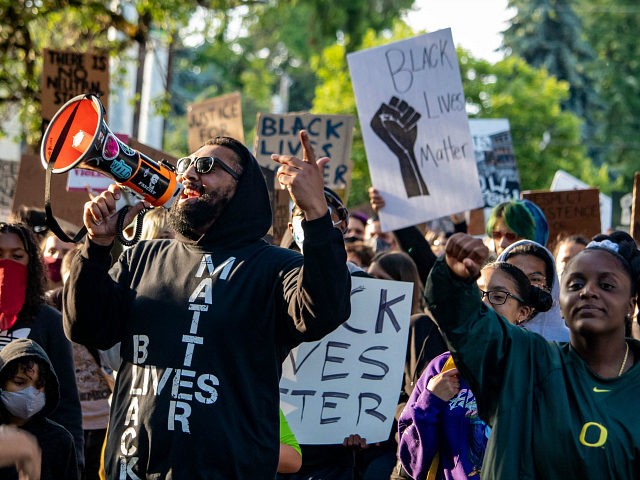The Associated Press (AP) changed its style guide on Friday to capitalize “black” in reference to people.
The AP wrote of its change:
The Associated Press changed its writing style guide Friday to capitalize the “b” in the term Black when referring to people in a racial, ethnic or cultural context, weighing in on a hotly debated issue.
John Daniszewski, AP’s vice president of standards, wrote of the news outlet’s new guidelines in an official statement:
AP’s style is now to capitalize Black in a racial, ethnic or cultural sense, conveying an essential and shared sense of history, identity and community among people who identify as Black, including those in the African diaspora and within Africa. The lowercase black is a color, not a person.
We also now capitalize Indigenous in reference to original inhabitants of a place.
These changes align with long-standing capitalization of other racial and ethnic identifiers such as Latino, Asian American and Native American. Our discussions on style and language consider many points, including the need to be inclusive and respectful in our storytelling and the evolution of language. We believe this change serves those ends.
As a global news organization, we are continuing to discuss within the U.S. and internationally whether to capitalize the term white. Considerations are many and include any implications that doing so might have outside the United States.
We continue to discuss other terms, including minorities and people of color, as well as the term “Black, Indigenous and people of color.”
The Chicago Sun-Times joined the AP’s new writing guidelines while also guiding its writers to capitalize the word “brown” in reference to people.
Chris Frusco, the executive editor of the Chicago Sun-Times, said via a statement, “Our decision to capitalize Black is an acknowledgment of the longstanding inequities that have existed in our country, and the unique role that Black art and culture have played in our society. Cultural trends among white people, e.g. Italian Americans, Irish Americans, etc., are more disparate, hence our decision not to capitalize white.”
Frusco wrote in an email to a staffer, “We will continue to lowercase the “w” in white, which is a wider descriptor of people of numerous origins. Of the city’s 4,767 firefighters and paramedics, 65.2% are white, 16.6% are Black and 15.9% are Hispanic.”
Other news media outlets adopting the new capitalization standards include BuzzFeed, the Los Angeles Times, MSNBC, NBC, and USA Today.
The Brookings Institution praised the AP for its change — after recently urging the AP to do so — explaining its support for capitalizing “black” but not “white”:
Momentum, comprehension, and history clearly support capitalizing “Black.” Some, however, will undoubtedly ask, “But what about capitalizing white?” They will argue that if one racial term deserves capitalization, another should too.
But that thinking is, at best, a false equivalence between different issues. At worst, it’s a deliberate excuse to not address racial injustice, just as “but what about Black on Black crime?” or more recently “but what about looting?” distract from honest attention to systemic racism. To argue “but what about capitalizing white”—particularly without presenting rationale and reasonable articulation on the topic—contributes to the harmful framework and power imbalance that says Black Americans’ progress can only be assessed or measured against white Americans. Giving Black Americans the respect they deserve is not a zero-sum game. The decision to capitalize Black should be made on its own merits.
The New York Times linked the AP’s style guide change to recent events following the death of George Floyd:
An ongoing debate over capitalization of Black accelerated in many U.S. newsrooms in recent weeks as journalists grappled with massive protests and sweeping changes in the aftermath of George Floyd’s death at the hands of police.
A Friday-published column from the New York Times addressed the AP’s decision to capitalize “black” but not “white”:
So far, most news organizations have declined to capitalize white, generally arguing that it is an identifier of skin color, not shared experience, and that white supremacist groups have adopted that convention.
The AP stated it would decide on whether or not to capitalize “white” within a month:
Assorted “verified” Twitter users responded to the AP’s decision:
A column at the Atlantic called for capitalizing both “black” and “white.”
The AP style guide has a section dedicated to “race-related coverage,” advising that “Omissions and lack of inclusion can render people invisible and cause anguish.”
The AP provides examples of when a person’s race is noteworthy while stating that race is mostly an irrelevant characteristic of persons being reported on:
Consider carefully when deciding whether to identify people by race. Often, it is an irrelevant factor and drawing unnecessary attention to someone’s race or ethnicity can be interpreted as bigotry. There are, however, occasions when race is pertinent:
In stories that involve significant, groundbreaking or historic events, such as being elected U.S. president, being named to the U.S. Supreme Court or other notable occurrences. Barack Obama was the first Black U.S. president. Sonia Sotomayor is the first Hispanic justice of the U.S. Supreme Court. Jeremy Lin is the first American-born NBA player of Chinese or Taiwanese descent.
“In other situations when race is an issue, use news judgment,” adds the AP. “Include racial or ethnic details only when they are clearly relevant and that relevance is explicit in the story.”
The AP’s “race-related coverage” section reflects the latest updates, directing writers to capitalize “black” and “indigenous” as proper nouns according to the AP’s style guide.
Follow Robert Kraychik on Twitter.

COMMENTS
Please let us know if you're having issues with commenting.